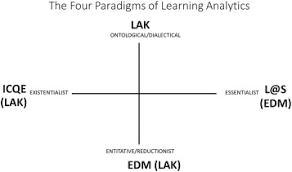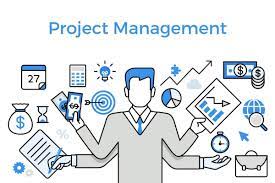Want help to write your Essay or Assignments? Click here
Business Operations and Systems
Introduction
B&M is the fastest growing retailer business that has outlet stores on more than 450 high streets in UK and Germany. In the UK for instance, the company offers clients a wide range of FMCG products at reasonable costs. The company’s primary operations objective is to provide customers with an enjoyable shopping experience, premium products and eccentric value to win customer loyalty.
In 2015 the retailer registered an average 2.7 million client transactions on a weekly basis. Zero expenditure on the advertisement is what drives the cost leadership. This paper evaluates operation management for a B&M retail stores in the UK. It looks at some of the challenges the company grapples with in its bid to transition online.
Part 1
Why Customer Turn up to the Stores
Electronic retail establishments’ invest a lot on promotions to gain more clients. The approach is even capital intensive when customers flock online, especially with heightened competition. With this in mind, it would be prudent to comprehend the type of entry for every client to determine the earnings of the marketing efforts. B&M embraces various channels to win customer loyalty including; recommendations, paid search, marketing offers, mobile apps and gift cards among others.
Customer engagement
Clientele involvement is crucial because it aids in determining consumer behavior. To evaluate customer relationship at B&M, it is necessary to use three fundamental dimensions such as mailer response, visitation trend and procurement behavior.
B&M should use mailer response to enhance shopping. Personalized reminders can be employed to attract customers. Close consideration to this will enhance the organisations capacity to capture the most actionable client-related statistics.
Visitation trend: this type of information is one huge playground on which in-depth review can be pegged. This type of data is critical when it comes to helping clients engage with customers (Pettersen, 2009). For computing customer value, defined metrics such as some visits to either particular brands or offers may be employed to project the clients value (Slack et al. 2012).
Procurement Behavior: Autoresponders and the visiting trend can be used to analyze the customer interest. Buying behavior is a reflection of how clients are involved.
Want help to write your Essay or Assignments? Click here
Customer Exit/Churn
It is the dream of every business to retain clients, however, for most online retailers, about 50% of customers will just make a one-time purchase. Some recurrent purchases may also wither over a particular period.
At least one in every four online shopping has failed to reach the client in good time, as such; millions have been forced to put up with late consignments (Retail Week. 2012). While more than 50% of people prefer to make online purchases all for good reasons, about twenty-six percent of online customers have witnessed issues when it comes to delivery of products (Retail Week. 2012). In short, B&M is likely to grapple with the urgency of delivery for online distribution market.
Customer value for online shoppers
People make online purchases not because a given store has some of the most sophisticated technology or impressive media; they buy from these infrastructures because they need solutions to their problems. For sustainable business operations, B&M should help clients resolve problems by offering products that are tailored to solving client problems.
Want help to write your Essay or Assignments? Click here
The Changing Online Value Chain
When transitioning online, the value is altered by a linear flow of physical goods and services to a multi-directional data flow. At every phase of the supply chain, valuable information is collected, evaluated and disseminated to others. Apart from the products and services, the information is critical when it comes to creating real clientele value. While B&M takes advantage of cost leadership it is also essential to understand that customers make purchases not because of cheap prices but for many other reasons such as:
Save time: B&M should assist people to access goods and services promptly.
Minimise Risks: Offer complete data that assist each client in making informed procurement decisions
Stock Things they Treasure: Sell products people may want to buy
Status: Develop networks with specialized discounts
All these variables are dependent on having the best data about items, services, clients, markets and partners. Gathering, synthesizing and disseminating information in ways clients find essential is a powerful means to value creation.
Want help to write your Essay or Assignments? Click here
Challenges of Online Buying
Buying goods online are convenient compared to visiting a physical store. Also, online buying presents clients the opportunity prices a wide of products. Much of online marketing and security have developed; it is associated with a myriad of problems including buying the wrong product, being scammed on the internet (Slack, Chambers and Johnston, 2004).
Wrong order
When buying online, if a shopper request for a product and get a wrong one, it is the responsibility of B&M to correct the mistake or refunds the customers. Online stores recognise the customer service can either make or harm their operations; therefore, B&M should be prepared to correct this issue if they occur. For instance, they can compensate the cost of shipping.
Nonetheless, on internet auction websites, this procedure is not clear since they act as platforms for connecting shoppers and sellers (Rosemann, 2010). In certain cases, they can provide an online method for addressing delivery of wrong products and act as intermediaries in the procedure. Therefore, for B&M when settling for an online system, it should put in place a resolution center to address issues related to the wrong delivery of products as such errors can adversely affect its operations.
Delayed delivery
With online buying, there are changes of not getting products or delayed delivery. If shoppers fail to get their products within the stipulated time frame, the seller should refund the buyers. As such, B&M will be put in place appropriate models to ensure clients get their orders on time. Furthermore, the store will also be ready to help clients in case the product is not delivered. Nevertheless, if the product is not delivered B&M will provide shipping as well as tracking details; refund or send a replacement.
Under certain condition, an order can be shipped but goes to the wrong address; stolen, or inadvertently left. If such occur, the store will be ready to give resolve such issues. With regards to international customers, when a wrong order is delivered, major online vendors require settling the case in a local court. This is not practical; therefore, B&M will liaise with a store near the clients and replace it with the right one.
Want help to write your Essay or Assignments? Click here
Appropriate operations models (quality/depth).
Delivering products to clients on time and the suitable temperature is an import strategy for B&M’s success. Clients have a higher expectation when it comes to distribution of goods, accuracy and flexibility. B&M has to adopt a window while ensuring that frozen products are stored at the appropriate temperature. There are different operation models including;
Distribution operation; this model is regarded strategic operation for an online entity to perform its delivery channels. It implies that the organisations has total control of the distribution process and can use it as a venue for developing a relationship with clients. B&M can adopt its delivery channels enabling it to provide state-of-the-art in a 2-hour delivery window.
Outsource distribution of goods; B&M can contract a third party like express distribution services. This will help the organisation to delegate the challenging role of scheduling daily routes to an expert, permitting it to concentrate on other parts of the operations.
This model does not investigate infrastructural facilities though it’s flexible if demand fluctuates. Nevertheless, this method is perilous such that B&M outsource a third party firm to control its operations. Additionally, this model provides an opportunity for developing a relation with client.
Third location delivery or click and drive model; the clients make online orders and pick them at particular locations.
These sites can be owned by B&M or particular warehouse or third-party areas such as post office. Third location delivery will allow B&M to save distribution expenses and increase client fulfillment with extra services (Retail Week. 2012). Unattended delivery through insulated boxes: This will enable B&M effectively use its distribution routes. Also, this model is convenient particularly, for clients who are present during childbirth time.
There is no appropriate model, in-store buying model appears effective especially, in small demand sectors, however once the volume increases centralised warehouse technique is efficient. Some stores have realized and are adopting hybrid techniques, integrating in-store model with centralised warehouse technology (Johnson & Clark, 2008). Similarly, stores are experiencing a trade-off between providing convenient delivery services and efficiency.
Want help to write your Essay or Assignments? Click here
Creating Customer Value
There are different ways for the organisation to create value for its clients, especially when buying online. These methods include;
Release trapped value to improve efficiency. Creating value is sufficient where shoppers can quickly find products and at affordable rates. B&M can convert its Saturday parking area into a full-time shopping area. Offering new techniques to perform regular tasks also increase value, for example, providing instant downloads for important details instead sending via post office.
New-to-the-World Value presents new things that clients find not only essential but also valuable. In this case, B&M stores can offer products that meet the needs of the individual client, allowing them to develop groups of shared interests while allowing collaboration between individuals separated by location and time.
Online buying is flexible B&M can test new offers and determine the one the works effectively. Integrations can be applied to interrupt existing pricing strategies and increasing access globally. Regardless, value creation plan, the store can rely on the provision of relevant information to create long-term client value.
Want help to write your Essay or Assignments? Click here
Part 2
Tips: Structure for part two:
Root Definition (based on your chosen solution).
Root definition will be used by the project team, estimators and development managers; they will take the project (online ordering system) from the business manager. Using the necessary technology, expertise, process and develop an understanding of the project and the required costs (Holt, 2009).
This is a significant step as it helps the B&M to examine if the project is viable or not. This will be done within a short period with the assistance from consultants. This procedure is extremely competitive where the suitable bidder is selected based on the performance as well as organisational goals.
Table for CATWOE (this is to test the Root Definition).
This project will include
Customer: in this case, B&M clients
Actors including development manager, project team, estimator, software engineer and business manager. In short these are B&M employees who will manage the online system
Transformation; this will be in the form of processes, knowledge, technology and relevant details about the project. All the aspects are important in preparing a detailed recognition of the project while cost estimation to evaluate the viability of the bid. Why bother? Is vital in examining the probability of making the tender.
Therefore, B&M store should adequately understand the project. In essence, the organisation should determine whether or not the project fits with its objectives, cost and time frame. Owner; this include the project team. The environment includes different factors including organisational objectives, quality, cost, timeline, and competition.
Want help to write your Essay or Assignments? Click here
13. “AS IS” process plan (include brief summer of the process plan).

14. “TO BE” process program (include summary to explain the process plan)
In the “AS IS” process plan the problem is defined based on the clients’ perspective, there will be the challenges of wrong delivery or products and delayed delivery. Therefore, the process will be designed in a way that addresses these problems. In addition, the process will be developed while putting into account the incentive structure of B&M store. For instance, the company will monitor delays and unlawful delivery of products by returning the product to the warehouse.
Want help to write your Essay or Assignments? Click here
When it comes to the cause of wrong or delayed delivery, B&M will adequately assess the current condition with careful consideration of the problem. In the case of additional stages in the delivery process, the firm will eliminate some to fasten the process. After which an improved plan will be designed as shown below;

Part 3
Discuss how the managers would turn performance objectives into operations priorities and the resources that would be necessary for effective implementation of the new process (about six hundred words).
Transforming a strategy into positive outcomes starts with organizing people and practices through actions that are not restricted to strategy formulation, strategic and practical planning, accounting, talent and initiative control, projecting and technology (Heizer, 2011).
The leadership at B&M should implement a deliberate strategy by formulating, scheduling, and strategy control as opposed to depending on informal procedures and worksheets. There’s also the need to link the strategy and operations with an understanding that all areas of the company work in tandem to deliver performance (Marr, 2011).
Handling implementation as a process
The use of a balanced scorecard can help to translate approach into operational reality. Research indicates that the leadership craving for transformation and commitment essential to create and enhance a rigorous performance supervision process enhance the chances of success (Fitzsimmons & Fitzsimmons, 2007).
Strategy development
B&M managers can develop tactics to turn performance objectives into operations priorities. Regardless of the extensive use of management techniques such as balance scorecards, a few managers are skilled in developing a strategy. With a strategy in place, the managers will be able to clearly articulate operational priorities in a given time frame (Holt, 2009). In addition, they will easily galvanise B&M based on a particular as well as measurable strategic direction.
The managers will also use the strategy as a platform for identifying drivers of performance that result in positive outcomes. Besides, managers will be capable of understanding how clients and external environment affect performance while they rigorously examine inherent abilities.
Want help to write your Essay or Assignments? Click here
Translating the strategy
Translation of policy requires that managers use the outcomes and integrate them into a structure such as balanced scorecard. Strategy translation is vital as managers will use it to understand the connections between cause and impact among performance objectives and operations results through a particular structure (Jeston & Nelis, 2008).
This is imperative, as it helps managers to not only identify, but also select and search for portfolios required to prioritise operations. Apparently managers assign responsibility to drive performance against strategic goals while developing an information- acquisition technique to collect metrics (Sachon, 2010).
Structuring
When it comes to structuring, managers control the continuous alignment of the firm by the performance objectives. However, the managers are required to export priorities identified during strategy translation (Jeston & Nelis, 2008). Much as this is vital and challenging move, it requires working in two unique though connected ways. To start with, whether the company is implementing a new process or not, employees should work together and recognise the change.
Managers should be aware of the firm’s strategy and use different methods to ensure that employees understand it (Fitzsimmons & Fitzsimmons, 2007). They also need to align incentives with plan. This is the social component of structuring, where managers persuade the firm to recognise while supporting change.
Moreover, there is a technical aspect of restructuring, which require managers to make sure that different operations work seamlessly. As such, the managers have to align improvement plans using Six Sigma or other performance targets. This procedure is commonly known as cascading and it has to integrate operational dashboard as well as balanced scorecards with strategies associated with the wider strategy of the firm (Rosemann, 2010).
Want help to write your Essay or Assignments? Click here
Plan operations
The top management at B&M should weave initiative control into the budgetary planning process, to ensure strategic investments obtain funding. This calls for the development of an incorporated scheduling procedure that provides a smooth transition from strategic planning to financial planning that is comparatively seamless and harmonized (Simchi-Levi, 2007).
They should employ methods like rolling estimates, model driver transparency to allow on-time allocation (Harrison, 2014). Above all, managers at B&M should leverage the company’s performance and business intelligence applications to support each stage.
Using a Balanced Scorecard, discuss how the business performance can be measured post implementation
Perspectives
As far as the balanced scorecard is concerned, the B&M is examined from four viewpoints, and to develop metrics, collect data and evaluate it based on these perspectives:
The Learning and Growth Perspective
This perception comprises employee training and organisational cultural attitudes connected to both individual and corporate self-improvement. In this age of technological transformation, it is somewhat critical for information employees to be in a continuous learning mode (Kaplan, 2010).
Metrics at B&M can be executed to instruct top managers in channeling training funds where they are needed most (Anupindi et al. 2008). Whatever the case may be, learning and development comprise for the success of B&M. Moreover, learning entails communication among employees that enable them to obtain help on an issue if need be.
Want help to write your Essay or Assignments? Click here
The Business Process Perspective
With this perspective, the top managers can determine how internal business processes run, and whether or not its business processes conform to clientele requirements (Kaplan and Norton, 1996). However, metrics should be developed by those people who understand the business operations, with the organisation’s distinct objectives (Heizer, 2011).
Customer Perspective
When it comes to client perspective, B&M focuses on fulfilling the expectations of customers. These are the main parameters; if the B&M fails to meet clients’ needs, they find other companies, to satisfy these expectations. The poor performance of customer perspective is the main parameter of that can lead to the decline of B&M though the companies past financial records look well. In creating satisfaction metrics, B&M must analyse the type of clients and varieties of procedures used to produce goods and services.
Financial Perspective
Financial information is vital in measuring post implementation. As such it should be timely and accurate as such B&M management should be ready to provide it when needed. There is adequate processing of financial records. With the adoption of the online ordering system, processing will not only be centralised but also automated.
Nonetheless, economic contributes to unbalanced condition compared to customer, business process and learning perspectives (Harrison, 2014). For that reason, financial-based information like cost-benefit and risk assessment information can be integrated to measure adequately business performance.
Bibliography
Anupindi, R et al (2008) Managing Business Process Flows: Principles of Operations Management Harlow: Pearson Educationed. Harlow, England: Pearson Education
Fitzsimmons J & Fitzsimmons M (2007) Service Management: Operations, Strategy, Information Technology London: McGraw-Hill
Harrison, N. (2014). PoundLand Expands to Online. Retail Weekly Journals. 1 (1), p1-7.
Heizer, J. (2011). Statistical Tools for Managers. Operations Management. 6 (2), p14-23.
Holt, J (2009) A pragmatic guide to business process modelling London: British Computer Society.http://www.bandmretail.com/about-us/history.aspx
http://www.retail-week.com/multichannel/highs-and-lows-of-click-and-collect/5037714.article [Accessed: 28th Feb 2016].
Jeston, J & Nelis, J (2008) Business process management: practical guidelines for successful implementations 2nd Ed. London: Butterworth-Heinemann
Jeston, J & Nelis, J (2008) Management by process: A practical road-map to sustainable business process management London: Butterworth-Heinemann
Johnson, R & Clark, G (2008) Service operations management Harlow: FT/ Prentice Hall
Kaplan, R (2010). Alignment. Harvard: Harvard Business Press. P29-56
Kaplan, R. S. and Norton, D. P. 1996. Using the balanced scorecard as a strategic management system. Harvard business review, 74 (1), pp. 75–85.
Marr, B (2011). The balanced scorecard and intangible assets: similar ideas, unaligned concepts. 4th ed. Cranfield: Emerald Group . p86-99.
Pettersen, J. 2009. Defining lean production: some conceptual and practical issues. The TQM Journal. 21 (2), p34-51.
Retail Week. 2012. Highs and lows of click-and-collect. [online] Available at:
Rosemann, M 2010. Handbook on Business Process Management. Queensland: Gold Coast Press. P29-54.
Sachon, M. 2010. IESE Insight Hard Discount Retailers: The Secrets of Their
Simchi-Levi, D (2007) Designing and managing the supply chain: concepts, strategies and case studies 3rd Int Ed. Boston: McGraw-Hill
Simha, R Magal & Word, J (2009) Essential of Business Processes and Information Systems Chichester: John Wiley and Sons
Slack, N et al (2012) Operations and Process Management: principles and practice for strategic impact third Edition: Pearson
Slack, N., Chambers, S. and Johnston, R. 2004. Operations Management. 4th Success. [online] Available at: http://www.ieseinsight.com/doc.aspx?id=1125 [Accessed: 28th Feb 2016].
Want help to write your Essay or Assignments? Click here









